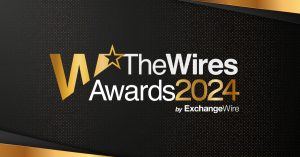'Nielsen's OCR & comScore’s VCE Drive Spend From TV', by Catherine Hallam, International Product Manager, Videology Group
by Romany Reagan on 13th Jun 2013 in News

The arrival of Nielsen Online Campaign Ratings (OCR) and comScore’s Validated Campaign Essentials (VCE) will change the way advertisers and agencies think about and use data. These are smart measurement tools that will help advertisers evaluate their digital media (including VOD) and assess which audiences they are reaching using traditional TV metrics (GRPs & TRPs).
Given these tools solely assess Age and Gender ratings, usage won’t be appropriate for all advertisers, but we expect to see strong take-up based on our experiences in the US, where 15-20% of campaign briefs, and a larger percentage among the largest advertisers, request their usage. Demand is particularly strong among brands that are heavy TV spenders.
Lower down the customer purchase funnel, when attributes such as interest or intent behaviours are more important for targeting or driving the call to action (currently around one third of UK campaigns) other sources of data will naturally be more suitable.
Nielsen OCR has only just become a live market proposition in the UK, but we are already seeing strong interest from advertisers.
The new demographic measurement tools are already having an impact and changing the way the market views different data sources and how it develops campaign strategies and tactics.
As more brands investigate whether using OCR and VCE-validated audiences are the appropriate targeting to drive awareness and familiarity, they will assess whether these data sets offer the best solution for them and how this relates to demographic targeting from other third-party data providers.
Third-party data providers will also have to be more upfront about the sourcing and value of their data, questioning what it means and and on what it’s based. The arrival of Nielsen OCR and comScore VCE will force data out of the black box into a heightened state of transparency, and that can only be a good thing for addressing privacy concerns.
We are also seeing, and expect to see further, increases in data providers validating their own segments against OCR and VCE. Some now even go so far as tailoring those segments in terms of sites, collecting the data to create more ‘OCR/VCE-compatible’ versions of their data segments.
To ensure advertisers can best target their ideal audience, datasets such as comScore VCE and Nielsen OCR allow Videology another means to optimise audiences in real-time, and deliver the reach the advertisers desire smoothly and at predicted and guaranteed pricing levels. The result of this unique granular cluster-based optimisation against VCE and OCR will be more effective planning and greater efficiency for advertisers’ campaigns.
OCR, for example, is based on privacy-protected data from Facebook and enables advertisers to deliver and assess granular level GRPs by age, gender and demographic in a way that can be directly compared to what they already do on TV.
It also gives advertisers a way to assess how their content travels from device to device and how their target audience makes this transition as well. This gives advertisers the insight and data they need to to finally optimise their spend at an impression-level and make sure that video messages are aligned and efficiently targeted.
The arrival of OCR and VCE will also give publishers a powerful boost. By getting their audience/readership validated under these datasets they will have a powerful accreditation to sell.
Until now, publishers have not had the tools that enable them to demand a higher price from advertisers for whom demographics are a defining KPI.
By putting online and mobile publishers (specifically VOD publishers) on a par with TV advertising, the expectation is that ad spend will move from TV, providing additional revenue for this market where it can now be optimised and measured according to traditional TV metrics.
The future growth of the programmatic advertising business requires both demand and supply sides of the online video equation to grow together. To do this, both sides need to be able to measure effectively what’s being delivered, using the same language.
Failure to do so can lead to a mismatch between buyer and seller that undermines both sides’ confidence in this emerging and hugely effective channel.
For many advertisers OCR and VCE will be the first time they have had that common language and this will give them the confidence to take that activity to a new level.
AdvertiserAgencyBrandingDataPublisherVideo








Follow ExchangeWire